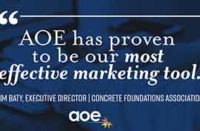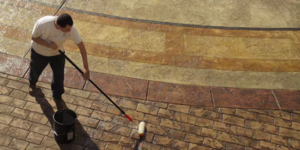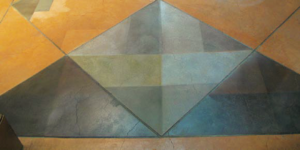If you are truly committed to service, not just the initial sale, then you’re not through when you’re done. I’ve had many an applicator share with me the idea that “once I receive the check, I’m done.” Today, especially in our current economic conditions, I challenge that notion, not only because I believe it to be shortsighted, but also because I believe it reflects more on your business philosophy than you are aware. There were two rules that I tried to follow as a small-business person: 1) don’t take your eye off the business, and 2) focusing on the customer’s satisfaction after the sale was as important as making the sale in the first place. This column will focus on the second, that of doing everything you can to set yourself apart, to turn your customer into a cheerleader for you.
“You’re not through when you’re done” means that you understand the need to nurture and coddle your customer to turn them into that cheerleader for you and your company. Does that mean that you only worry about each specific customer, or are you alert enough to be all-inclusive and educate the specifier, the general contractor and other subcontractors? Can they affect your customer’s satisfaction with your work? The general contractor could actually be your customer, and by taking care of them, you also take care of the end-user.
Let’s focus on the basics: understanding basic tenants of cleaning polished concrete.
Every chemically densified floor, whether polished or simply burnished, will have calcium silicate, and therefore each will require similar cleaning methods. All concrete floors, in spite of how they were finished, will have open pores that can capture and hold dirt and spills – polished concrete even more so. Remember that your grinding process has removed much of the cream, thus exposing thousands of micropores to dirt and spills. Dirt can be simple soils, salts or abrasive silicate sands, and spills can be water, oils or acids. In any case, all floors are exposed to spills and tracked-in soils, especially in traffic-bearing areas. You as the experienced flooring expert need to not only educate the general contractor, owner or tenant, but also provide them with a solution.
Basic guidelines to cleaning
When cleaning, your objective is to remove soils and spills from the floor, doing so in a manner that doesn’t cause damage to the calcium silicate in the floor. The pH of your cleaning product must be controlled so as not to either be too high or too low. Controlling your pH doesn’t automatically mean “neutral cleaner,” but a cleaner whose pH reflects the natural pH of concrete.
Releasing soil from the floor only to have it be redeposited on another section of the floor not only defeats the intent of your cleaning program, but can actually create a detrimental situation, so you need a cleaner that can provide a high level of soil suspension.
Soil that has been solubilized and not removed from the surface will actually penetrate the pores, where it will attract additional soil and cause degradation from within the floor. A very damaging example is in areas with salts, either waterborne from the ocean or used as a de-icer. Salts that have been solubilized and are allowed to penetrate the pores will eventually recrystallize below the surface and cause spalling if they are not properly neutralized and drawn away.
Too many floors are cleaned by the “more is better” philosophy of cleaning, and that causes the floors, and you, problems by leaving behind excess detergents. These detergents penetrate the pores and then continue to attract soils as they should, but in this case they are pulling them deeper into the pores, not removing them.
To assist your cleaning program, you must also incorporate a walk-off mat system that grabs soil, oil and dirt off the shoes of people entering a building. A proper walk-off system, when properly maintained, can eliminate 80 percent to 90 percent of tracked-in soils. But if a walk-off system is not properly maintained, then one will have successfully transferred the soils further into the building, creating a greater problem.
Don’t shortchange yourself or your customer. A properly maintained floor will help to ensure a satisfied customer, and a satisfied customer will become your cheerleader and help to bring you more business. A well-maintained floor provides you with positive references, reflecting on your company’s ability to make good on your promises.
















